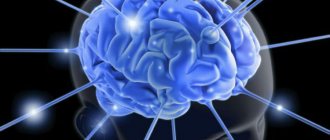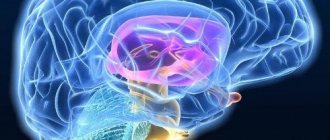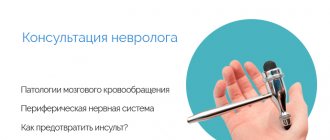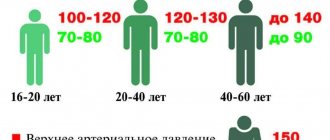Drug therapy for vegetative-vascular dystonia is ineffective because autonomic dysfunction occurs for various reasons and is manifested by many symptoms.
At the Yusupov Hospital, neurologists stop an attack of VSD with the help of individually selected medications. Therapy for vegetative-vascular dystonia begins with non-drug treatment methods. Treatment of VSD is carried out using modern physiotherapeutic procedures. After the vegetative crisis subsides, VSD can be treated with Almag. This is a magnetotherapy device that operates with a traveling pulsed magnetic field. It helps normalize the functions of the central nervous and cardiovascular systems. At home, it is permissible to use aromatherapy for vegetative-vascular dystonia.
Therapeutic exercise (physical therapy) for VSD
Dosed physical activity, running, and exercise during VSD help stabilize the function of the autonomic nervous system. Breathing exercises help quickly cope with an attack of suffocation. A contrast shower stabilizes blood vessels and helps normalize blood pressure. Rehabilitation clinic specialists draw up an individual program for restoring impaired functions in VSD.
Rehabilitation specialists at the Yusupov Hospital individually select exercises depending on the type of VSD. Vegetative-vascular dystonia of the hypertensive type is manifested by an increase in blood pressure. The therapeutic effect of physical exercises in the hypertensive form of VSD is due to their beneficial tonic effect on the central nervous system. Systematic training increases the tone of the parasympathetic system and improves the humoral regulation of blood pressure.
Patients begin training immediately after diagnosis. General developmental exercises are used for all muscle groups, including small muscles in the distal parts of the limbs. Special exercises in voluntary muscle relaxation, breathing exercises, as well as exercises for the vestibular apparatus give a more pronounced effect in lowering blood pressure and normalizing impaired vestibular function. Performing exercises also has characteristic features.
Exercises are performed under the guidance of a senior instructor-methodologist of exercise therapy. They should be done with full amplitude, freely, without tension, holding your breath or straining. At the beginning of the course, the number of exercises alternates with changes in the position of the body. Physical exercises are used alternately for different muscles. After difficult exercises, patients perform easier ones.
Muscle relaxation exercises help reduce the tone of skeletal muscles and blood vessels, relieve excitation of the vasomotor center, which leads to a decrease in blood pressure. Breathing exercises for VSD are performed with lengthening the exhalation. In order for the patient to better understand them, the instructor first teaches him diaphragmatic and diaphragmatic-thoracic breathing, then teaches him to combine breathing with various movements.
Rehabilitation specialists recommend that patients visit the pool during VSD. Swimming allows the patient to relax, have fun and improve their mood. For exercises in water, rehabilitators select exercises that are made easier due to the buoyant force of water. Immersion in water creates additional stress on the respiratory muscles during inhalation, and exhalation of water during the exhalation phase.
Fitness for hypotonic type of VSD
With this type of VSD, vascular tone is reduced, and accordingly, symptoms of vascular insufficiency predominate. Pressure 100/60 mm Hg. Art. and below provokes weakness, pallor, a feeling of lack of air, rapid breathing and yawning. Fog in the eyes, dizziness and even fainting are possible when moving from a horizontal to a vertical position. Also characteristic are redness or cyanosis of the face and neck, “marbled” coloring of the skin, and an unreasonable drop or rise in temperature. “Light cardio is recommended for such people,” says Anastasia Yurkova. This could be a walk, swimming and, of course, yoga, which will help strengthen muscles and work with breathing.”
If you are used to fitness, try training according to your usual pattern, but reducing the load by 25-30%. Definitely avoid exercises that involve sudden changes in body position (jumping, burpees, exercise on a high step platform) and those where the head drops below chest level (bending over, deadlifts, etc.). Also avoid lifting your legs while lying down (to pump up your abs, use an incline bench on which you lie with your feet down). Even if these exercises are included in a generally gentle lesson (Pilates, fitball class), ask the instructor to give you a safe analogue.
[new-page]
Sports for VSD
Along with gymnastics, dosed walking and walks are widely used for VSD. VSD is rare in athletes. Games (badminton, volleyball), rowing, skiing, skating are useful. Strength training for VSD is not used. When drawing up a rehabilitation therapy regimen, rehabilitation specialists at the Yusupov Hospital take into account the presence of contraindications for playing a particular sport for patients suffering from SCD.
Dosed walking has no contraindications. It is carried out daily. In the first month, it is performed at the patient’s usual speed. Subsequently, the speed decreases slightly, and the distance increases from 3 to 5 km. Then the pace increases.
Rehabilitation clinic specialists individually select a set of exercises for patients with VSD. Patients are encouraged to walk:
- regular;
- on socks;
- with high knees.
Then take a step with the left foot, turn the body to the right, arms to the right, step with the right foot, turn the body to the left, arms to the left. After this, the patient walks as usual for 2-3 minutes.
The next exercise is performed from a standing position. There is a stick in your hands, the grip is made by the ends of the stick. The arms are raised forward and up, the leg is pushed back and placed on the toe, inhale, return to the starting position and slowly exhale the air. Do the exercise in the same sequence with the other leg.
Take the starting position “standing”. The arms are raised up, the left leg is taken to the side and placed on the toe. While tilting the torso to the left, exhale slowly, returning to the starting position - take a deep breath.
In order to perform the next exercise, you should take the starting position “standing, stick from behind, grip by the ends.” When rising on your toes, you need to bend over, pull the stick back and take a breath. Returning to the starting position, exhale.
The influence of VSD on exercise tolerance
Playing sports with VSD is permissible in almost all cases, but with some restrictions.
The load should be chosen in consultation with the attending physician and depending on the state of health. With a mild course, maintaining the ability to work, good tolerance to physical activity, and minimal pain, it is allowed to engage in almost all types of sports. The diagnosis of “vegetative-vascular dystonia” does not limit activity in any way.
Permitted types of loads:
- run;
- fitness;
- yoga;
- Pilates;
- a ride on the bicycle;
- step aerobics using a low platform;
- swimming;
- skating;
- fitball
The average severity of the pathology with some decrease in working capacity and periodic vegetative crises does not cancel sports activities. You should monitor your heart rate and if it increases, stop training and rest.
A severe degree with severe respiratory disorders, frequent vegetative-vascular crises, and pressure changes implies refusal to exercise in the gym. For such patients, the doctor must select a complex of exercise therapy.
An approximate set of exercises:
- describe circles with your hands in different directions;
- put your palms together in a locked position and press them against each other for fifteen seconds;
- tilting the head in different directions for five to six approaches;
- circular movements of the shoulders, slightly turning the torso to the right and left;
- hands on the belt, fix the leg bent at the knee for 4-5 seconds, do seven approaches for each limb.
If the load causes darkening in the eyes, increased heartbeat, chest pain, dizziness, severe weakness, you should stop immediately, drink water and a sedative. Further tactics should be discussed with your doctor.
Exercise therapy for hypotonic VSD
Therapeutic exercises for the hypotonic form of vegetative-vascular dystonia at the beginning of the course of treatment are aimed at adapting the body to physical activity. Patients perform exercises in the starting position, sitting and standing, without weights, in a tonic dosage. The exercise therapy instructor includes a small number of special exercises in the lesson. The class density is low.
During the main course of treatment with exercise therapy, the number of special exercises increases. These include the following exercises:
- with weights - dumbbells, medicine balls, weighing 1-2 kg;
- with resistance - on simulators, with a partner, with expanders;
- static - holding dumbbells in outstretched arms, tensing the muscles with pressure on the support, resisting the movement;
- speed-strength – jumping, running, jumping;
- on coordination of movements - asymmetrical movements of limbs, juggling with various objects.
Patients are asked to perform exercises for the vestibular apparatus:
- head movements;
- balance in place and in motion;
- movement with open and closed eyes.
The fight against VSD is carried out systematically, and the main role in it is given to the patient.
Massage for VSD
Massage for VSD has advantages over drug treatment of vegetative-vascular dystonia. The authors of the methods recommend an individual approach to the choice of massage techniques. Massage has the following effects:
- as a result of massage movements, irritation of receptors occurs, which are located not only in the skin, but also in muscles, tendons and ligaments;
- due to irritation of nerve endings, a flow of impulses is formed;
- they are sent to the central nervous system, where information processing occurs;
- the flow of impulses causes a complex response from the body.
The effects of massage for VSD are numerous: increasing vascular tone, improving venous blood flow, accelerating lymph flow. What can’t be done with VSD? Massage therapists at the rehabilitation clinic do not perform massage on patients with acute inflammatory processes, elevated body temperature, or the presence of pustular skin diseases.
For VSD of the hypertensive type, when the activity of the sympathetic nervous system predominates, a soothing massage is performed. Massage therapists focus on stroking and rubbing. Massage therapists use smooth movements. Massage is performed on the collar area, abdominal area, and lower extremities. In case of VSD of the hypotonic type, all massage techniques are actively used and a general massage is performed.
In order to undergo an effective course of treatment for vegetative-vascular dystonia, call the Yusupov Hospital. Rehabilitation clinic specialists use all modern non-drug treatment methods that allow you to restore the function of the autonomic nervous system. Rehabilitation specialists give recommendations for treatment using non-drug methods at home and teach patients self-massage techniques.
Types and symptoms of VSD
In most cases, it is quite difficult to identify clearly distinguishable symptoms of vegetative-vascular dystonia. Many signs of this complex of syndromes may be indicators of the presence of diseases that are not directly related to VSD. Only a comparison of all indicators of the autonomic nervous system and/or brain in combination with cardiac or cardiovascular manifestations provides the basis for a definite medical conclusion. Before making a diagnosis of VSD, the doctor must understand the characteristics of the patient’s individual symptoms. Vegetative-vascular dystonia is usually divided into three types (based on blood pressure level):
- the hypertensive type is characterized by increased pressure (periodic surges), symptoms of vegetative-vascular dystonia of the hypertensive form may include increased sweating, anxiety, chills of the extremities, rapid heartbeat and visualized pulsation of large blood vessels (for example, carpal or popliteal);
- the hypotonic type is characterized by a decrease in blood pressure, in this case the symptoms of vegetative-vascular dystonia include shortness of breath, nausea, headache, general weakness, a tendency to faint, coldness of the toes and hands;
- the mixed type is characterized by periodic fluctuations in blood pressure (sometimes also called VSD of the cardiac form), here the symptoms of vegetative-vascular dystonia are usually considered to be general signs of fatigue, a feeling of lack of air, as well as interruptions in the functioning of the heart.
If you find yourself with the signs listed above, first of all, you should reconsider your work and rest schedule. Of course, consulting a doctor is also necessary.











